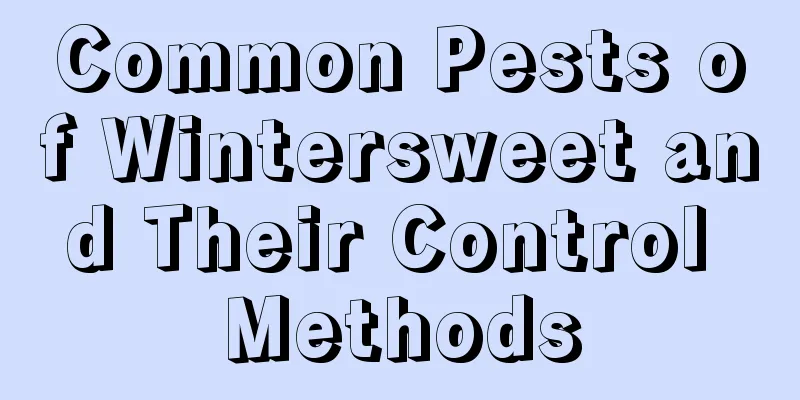Common Pests of Wintersweet and Their Control Methods

Wintersweet pests: Japanese wax scalesymptomNymphs and females suck sap from leaves and branches, often causing the leaves to turn yellow or sooty mold to develop. In the southern region, the females lay eggs in large numbers in mid- May , which hatch in mid- June . Male adults pupate and emerge in large numbers from late August to early September . This insect can spread the insect to other places by transporting infested seedlings. Prevention and treatment methodsIf a few plants are affected, they can be manually scraped off the branches. Preventive measures should be taken in daily life, and regular spraying of 1500 times diluted 40% oxydemeton-methyl emulsifiable concentrate or 1500 times diluted 50% carbofuran emulsifiable concentrate will have better effects. Wintersweet pests: cicadasymptomThis insect mainly harms flowers in winter. Its nymphs suck sap from the roots in the soil. The adults are more harmful and often cause branch death. Prevention and treatment methodsPay attention to searching for and killing newly emerged nymphs and newly emerged adults. You can use incense to kill the insects, make them fall, and then clean up the insect bodies. Fumigation is best done at night. At home, you can also wash out the sticky gluten from the dough and stick it on branches to catch adult insects. Pests of wintersweet: Big sedgesymptomThis insect is also known as the debt-avoiding insect, and is commonly known as the "hanged ghost." It is a pest that harms many types of flowers. When this insect appears on a plant, you can see that the leaves have been eaten into holes or notches by its larvae. They may even eat all the leaves on the branches, leaving only the leaf veins, which is very harmful. Prevention and treatment methodsThe protective capsule of the large moth is obvious and can be removed at any time to kill its larvae. However, this type of pest rarely occurs in household potted plants. In mid- July , spraying with 1000 times diluted 90% trichlorfon or 1500 times diluted 80% dichlorvos emulsifiable concentrate for prevention and control will have a better effect. |
<<: Disease and Pest Control of Cordyceps
>>: How to control mealybugs on the roots of Lithops
Recommend
What soil is best for Euphorbia pilosa
The soil for Euphorbia milii must be air-permeabl...
Forget-me-not varieties
Forget-me-not The Algerian forget-me-not flower i...
How to propagate azalea
Cutting propagation of azalea As long as the temp...
How to care for succulent plants in winter
Are succulents afraid of freezing? Succulent plan...
Folk sayings about aloe vera flowering
1. Folk sayings about aloe flowering Aloe vera is...
What to do if banyan leaves turn black
High humidity Improper watering can cause great h...
Cultivation and pruning of purple-leafed spider plant
Purple-leafed spider plant is also called hanging...
See how to grow tofu pudding
See the growing conditions of tofu pudding Tofu f...
How to grow trumpet creeper and how long is its flowering period
1. Cultivation method of trumpet creeper 1. Soil:...
How to raise egg geese
Laying geese, that is, geese used for laying eggs...
If the ping pong chrysanthemum dies, will it grow again next year? (If the ping pong chrysanthemum withers, will it bloom again the next year?)
Whenever the Spring Festival is approaching, all ...
Once I saw succulents, I was ruined for life and fell into the trap of growing flowers
Newbie Choice For those flower lovers who have ju...
Cactus cultivation methods and precautions
1. Soil To grow cacti, you need soil with good dr...
The Flower Language and Legend of Globe Amaranth
Flower Language Globe amaranth represents eternal...
When is the best time to take cuttings of jasmine?
Jasmine cutting time The time for jasmine cutting...









